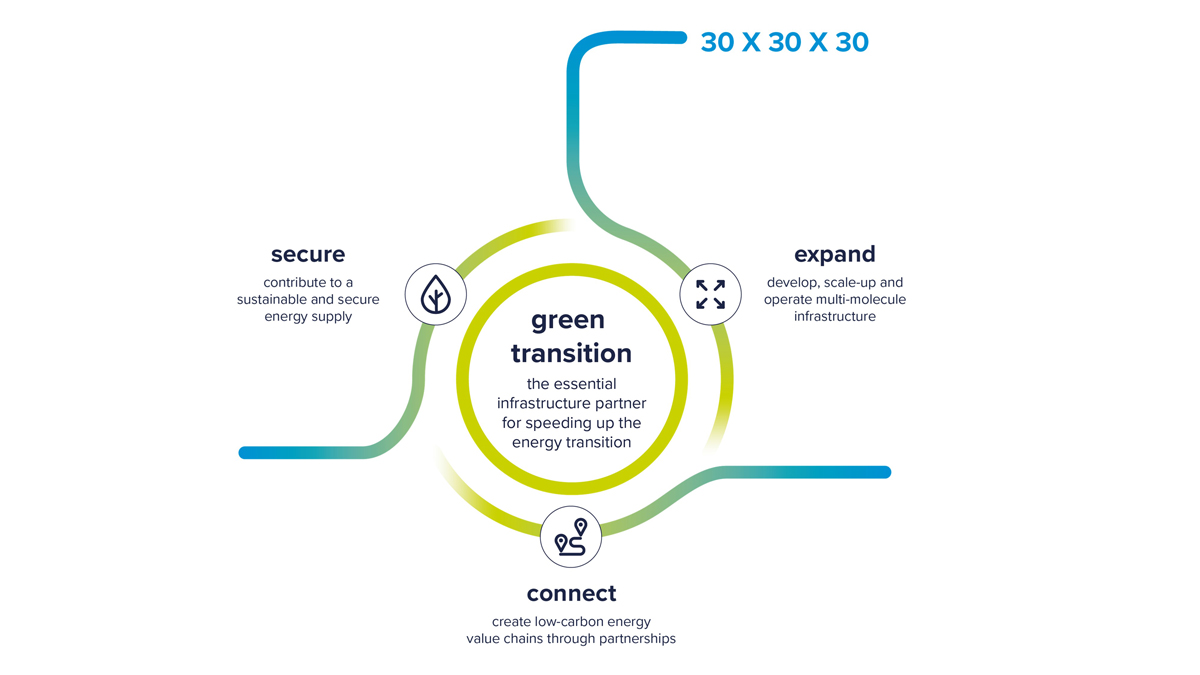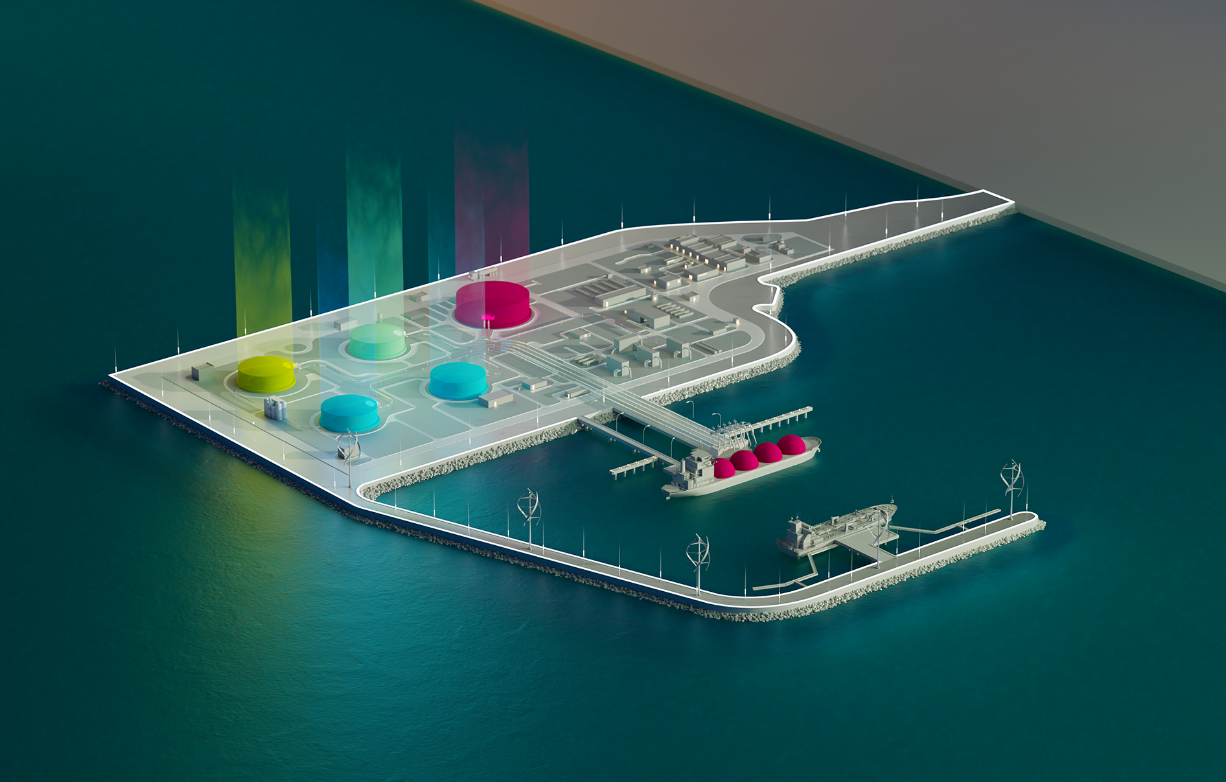How will Fluxys help companies transition to hydrogen?
Many industries are looking at the potential of hydrogen and CO2 capture for reducing their emissions. To make these developments possible, we at Fluxys are working hard to future-proof our network of pipelines.
Our ambition can be expressed in three numbers: 30x30x30
By 2030, we want to offer enough capacity to transport 30 TWh of hydrogen, an amount of energy that represents more than one third of total electricity consumption in Belgium.
By 2030, we also want to offer enough capacity to transport 30 million tonnes of CO2 annually, the equivalent of removing 13 million cars from the road every year. By way of comparison, there are 5.9 million passenger cars on the road in Belgium.
Infrastructure for energy transport: a genuine underground movement
We are engaging with industry to adapt our existing infrastructure in a timely manner and to build new pipelines where necessary. To enable and accelerate companies’ energy transition, we aim to develop hydrogen and CO2 pipelines for and between industry in Flanders and Wallonia.
Today, we already have a highly meshed network of natural gas pipelines. This is evolving into a network that will also transport CO₂ and hydrogen, which is how we will make Belgium an import and transit country in Europe for molecules such as CO2 and hydrogen. Our existing terminal in Zeebrugge and the future terminals in Ghent and Antwerp will play a key role in achieving this ambition of becoming an import hub for hydrogen and an export point for CO2.
Neighbouring countries are also in the process of building hydrogen infrastructure. In this move, our Belgian network dovetails with a large European backbone that is needed in order to enhance energy independence. And from an international perspective, we are laying the foundation for sustainably consolidating and strengthening our role as an energy hub in the centre of Northwest Europe.
Our terminals as European game-changers
Zeebrugge, one of the most important LNG ports in Europe, will be modified so that the terminal is ready to handle hydrogen and derivatives such as ammonia and methanol. In Antwerp, we are helping to develop an import terminal for ammonia. But that’s not all.
In Europe, there is not enough wind and solar power to supply the entire industrial sector with green energy. To obtain a reliable and affordable energy system, we import hydrogen via ships from countries where solar and wind power are abundantly available. Special loading arms pump the hydrogen ashore, after which it is stored or transported to industrial customers via pipelines.
Via the existing terminal in Zeebrugge and future terminals in Ghent and Antwerp, CO2 that companies capture can be transported and stored safely, for example in empty gas fields under the North Sea. Accordingly, these terminals will play a key role in making Belgium an import and transit country for molecules such as hydrogen and CO2.

